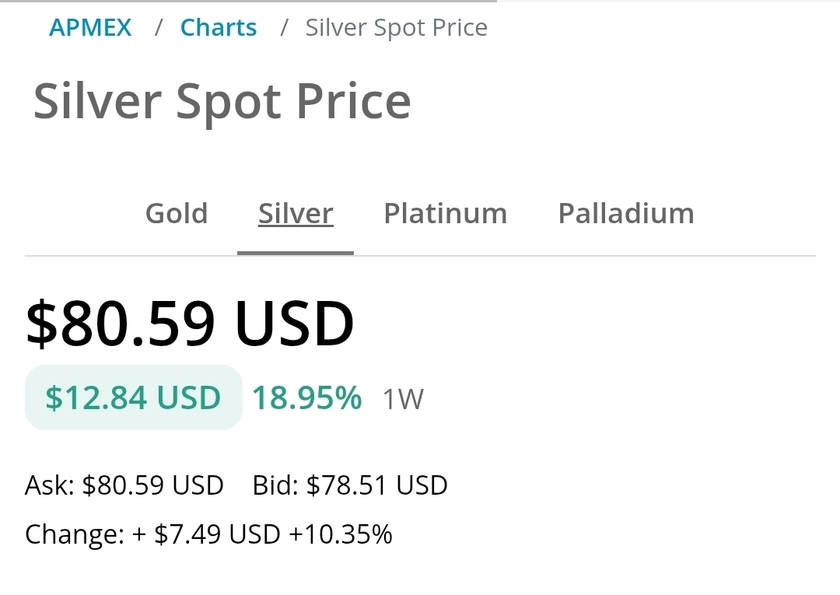Despite being touted as a game-changing innovation, the decentralized finance (defi) ecosystem is still not connected to fiat rails largely because of regulatory and compliance issues, Torsten Stuber, the CTO at Pendulum says. According to Stuber, the defi ecosystem will succeed in getting more traditional financial institutions on board once “a substantial amount of liquidity needed to facilitate efficient trading” is in place.
Defi’s Perceived Lack of Regulation a Barrier to Adoption
In addition, Stuber, whose firm uses the Polkadot blockchain to bring fiat networks to the decentralized finance ecosystem, suggested increased education and awareness as the other ways defi proponents can bring traditional financial institutions on board.
The Pendulum CTO also shared his views on central bank digital currencies (CBDCs), and their benefits and likely risks to defi. In written responses sent to Bitcoin.com News Stuber also explained why the integration of CBDCs into defi systems is something that goes against the very essence of decentralization. The CTO also explained why having more collateral could be a solution to the problem of stablecoins depegging during extreme market events.
Below are Stuber’s responses to the questions sent by Bitcoin.com News.
Bitcoin.com News (BCN): The foreign exchange market is believed to be a more than $6 trillion market that runs on the infrastructure built by traditional financial institutions. Some have suggested that forex trading based on decentralized finance (defi) can potentially improve the efficiency of, or access to, this market. However, for this to happen, some argue that the defi space needs to be developed further. To help readers understand why defi is potentially a game changer, can you briefly define decentralized forex trading and how this could potentially benefit traditional businesses, fintechs, or even traders?
Torsten Stuber (TS): Decentralized forex trading refers to the process of conducting foreign exchange transactions on a decentralized platform, typically built on a blockchain network. By leveraging smart contracts and automated market makers (AMMs), decentralized forex trading aims to improve the efficiency, transparency, and accessibility of the traditional forex market.
To be more specific, I particularly want to stress the following advantages. First, decentralized forex trading will lower transaction costs by eliminating intermediaries. Second, blockchain-based platforms record all transactions on a transparent distributed ledger – this can help minimize market manipulation and fraudulent activities. Third, traditional forex markets operate within specific trading hours, depending on the region, whereas decentralized forex trading platforms function round-the-clock, allowing businesses and traders to conduct transactions anytime and anywhere; even more, they facilitate seamless cross-border transactions, bypassing geographical restrictions. Finally, the cryptographic principles underlying blockchain technology provide a more secure infrastructure for conducting forex transactions.
The integration of smart contracts enables the creation of customizable, automated financial services, such as specialized forex automated market makers (AMMs), lending protocols, and yield farming opportunities. This can unlock new revenue streams for fintechs and traditional businesses. By integrating traditional forex markets with DeFi applications, Pendulum aims to create a shared financial infrastructure that bridges the gap between centralized and decentralized finance.
(BCN): Despite boasting advantages over conventional finance, the defi ecosystem is still not as connected to fiat rails as some would have liked. What do you think are some of the reasons for this state of affairs?
TS: Connecting fiat rails to Defi presents several challenges, which have limited the widespread adoption of a decentralized forex. One of the most important challenges is regulatory and compliance issues: Defi platforms typically operate in a decentralized, permissionless manner, which can create uncertainty in terms of regulatory compliance. As traditional financial institutions are subject to strict regulations, bridging the gap between fiat and Defi ecosystems requires addressing these concerns and ensuring adherence to applicable laws and regulations, such as AML/KYC requirements.
Furthermore, there are liquidity concerns. On-chain forex requires a substantial amount of liquidity to facilitate efficient trading and reduce price slippage. However, attracting liquidity from traditional forex markets to Defi platforms remains a challenge, as many institutional investors are still hesitant to venture into the crypto space.
The complexity of Defi platforms and the lack of understanding around their potential benefits may deter traditional businesses from engaging in on-chain forex activities. Increased education and awareness are needed to promote its adoption.
To overcome these obstacles, Pendulum aims to build a blockchain platform that combines traditional finance with Defi. By addressing regulatory concerns, enhancing liquidity, improving technological capabilities, and promoting education, Pendulum can help to establish a shared financial infrastructure for on-chain forex.
BCN: It can be argued that one of the main challenges that traditional finance companies face when trying to adopt or incorporate defi is the perceived lack of regulation. In your opinion, is it possible for traditional financial institutions to be able to interact with defi platforms without finding themselves on the wrong side of regulations?
TS: Traditional financial institutions can adopt Defi while maintaining compliance with regulations by focusing on a few strategies. One of the most important activities is to proactively collaborate with regulators: engaging in open dialogue with regulatory bodies can help to better understand the evolving regulatory landscape and ensure that any interaction with Defi platforms complies with applicable laws. Proactively working with regulators can also help shape future policies that facilitate a smooth integration of Defi into the traditional financial ecosystem.
Additionally, Tradfi [traditional finance] companies should adopt strict anti-money laundering (AML) and know-your-customer (KYC) procedures when dealing with Defi platforms. Another strategy is to collaborate with established and compliant Defi providers – these partnerships can help develop compliant Defi solutions tailored to the needs of traditional finance companies.
I would also recommend that institutions invest in training programs to educate their employees about Defi, its potential benefits, and associated regulatory challenges. This knowledge can help organizations make informed decisions and navigate the regulatory landscape more effectively.
BCN: On the topic of central bank digital currencies (CBDCs), proponents of the assets have often touted such digital currencies as better alternatives to privately created or issued coins. Some of these advantages are the ability to trace funds which allows authorities to target criminals that move funds via the traditional financial system. However, the same CBDCs come with risks that are not palatable to defi users. In your opinion, what do you think are some of the biggest risks associated with CBDCs for defi users and what degree of anonymity or traceability should these central bank-issued digital currencies ideally offer?
TS: Central Bank Digital Currencies (CBDCs) present both opportunities and risks for DeFi users. The main difference from decentralized assets is that they are issued and controlled by central banks. For that reason, they are subject to strict regulatory oversight and may involve extensive monitoring and data collection. DeFi users may face new regulatory requirements or restrictions when using CBDCs on DeFi platforms, or they may face the potential loss of privacy compared to using cryptocurrencies. CBDCs, by nature, are centralized currencies. The integration of CBDCs into DeFi systems could introduce centralized points of control and potentially weaken the decentralized nature of these platforms, impacting the core principles of DeFi.
Regarding the degree of anonymity or traceability of CBDCs, a balance must be struck between ensuring user privacy and enabling sufficient traceability to prevent illicit activities such as money laundering and tax evasion. Central banks may choose to implement varying degrees of anonymity or pseudonymity for CBDCs, offering privacy for users up to a certain transaction limit or implementing tiered identity verification requirements based on transaction size or risk.
BCN: We recently had a few episodes of stablecoins depegging or disappearing totally and this has raised a lot of questions. As many have learned, extreme events often cause tokens that are pegged against local fiat currencies to lose their value. How would you ensure that the tokens pegged to local fiat currencies don’t depeg in extreme events?
TS: This very much depends on the pegging mechanism. We particularly support one-to-one fiat-backed tokens that can be freely on-ramped and off-ramped anytime and in a compliant manner by exchanging one unit of the fiat currency for one token and vice versa. For such tokens, the risk of de-pegging can be lowered by guaranteeing a frictionless and highly efficient off-ramping and on-ramping mechanism and creating user trust that such a mechanism will always be available (e.g., by proving that sufficient reserves are available).
For more complex stablecoin constructs, one should adopt a mix of strategies to mitigate risk. Stablecoins pegged to local fiat currencies should be adequately backed by a basket of diversified assets, such as cash or short-term government bonds. In the case of crypto-collateralized stablecoins, requiring over-collateralization can help mitigate the risk of de-pegging. By holding more collateral than the value of the issued stablecoins, the system can better absorb fluctuations in the collateral’s value and maintain the peg during extreme market conditions.
As a general principle, ensuring transparency and conducting regular audits can help build trust and credibility in the stablecoin’s backing assets and stabilization mechanisms. This transparency can help users monitor the token’s stability and make informed decisions, contributing to overall market stability.
BCN: Your firm is reported to have teamed up with Getpaid Africa to enable on and off-ramp connections between Pendulum’s defi network and East African currencies. Why did you choose the East African markets for this sort of initiative?
TS: African and particularly East African markets present a unique opportunity for such a partnership. East Africa has experienced rapid growth in mobile money services. This widespread adoption of digital financial services provides a solid foundation for introducing Defi solutions that can seamlessly integrate with existing mobile money platforms, making it easier for users to access and adopt Defi products. In addition, some East African countries have shown a relatively progressive and forward-looking approach to digital financial services and cryptocurrencies – this favourable regulatory environment can facilitate the adoption of Defi solutions.
There is high demand for innovative financial services. A significant portion of the population in East Africa remains unbanked or underbanked. By offering accessible Defi solutions, Pendulum and Getpaid.Africa can help promote financial inclusion for these underserved communities.
The East African region receives a substantial amount of remittances. Pendulum can help streamline remittance processes, reduce transaction fees, and provide faster, more secure cross-border transactions.




























